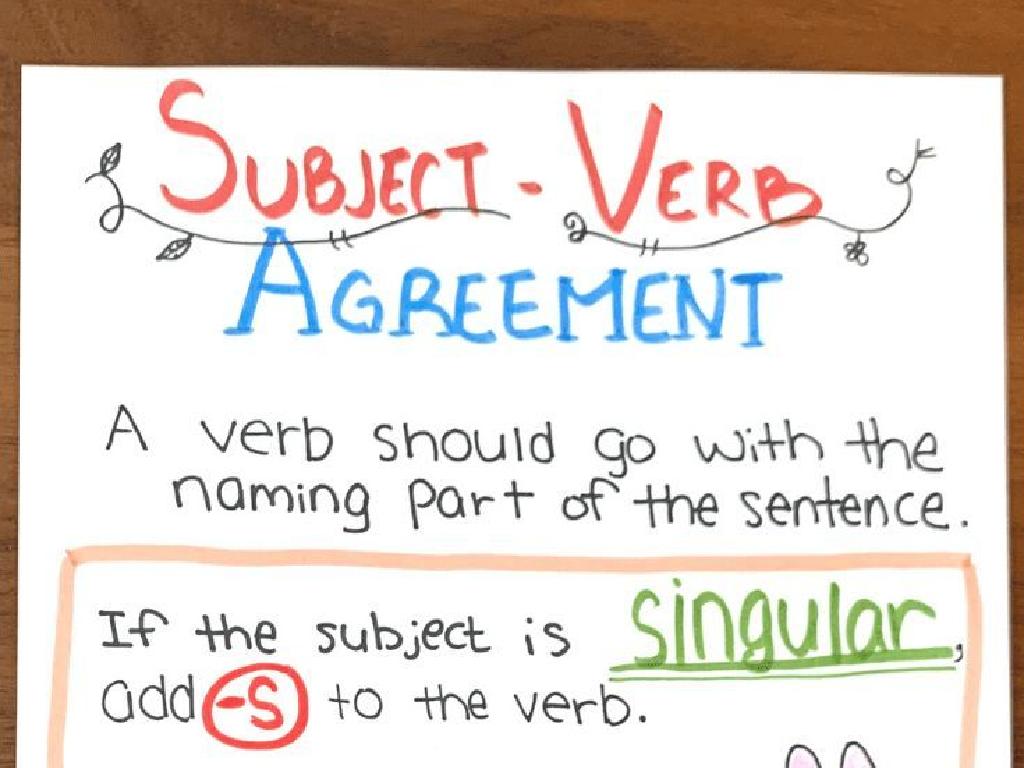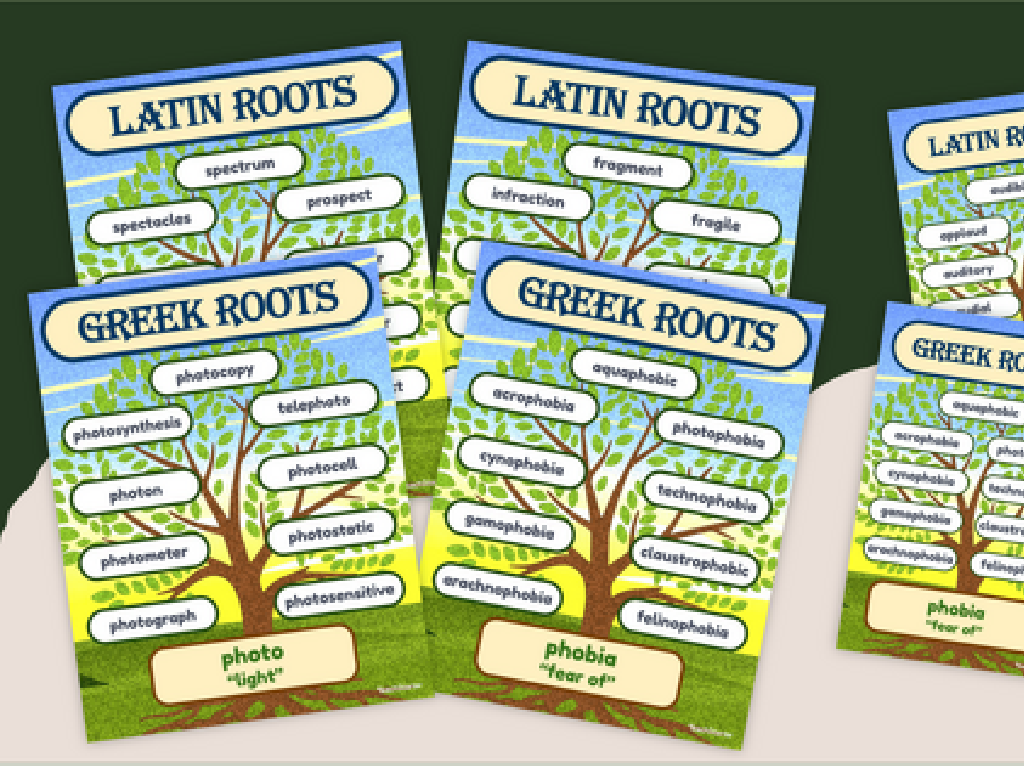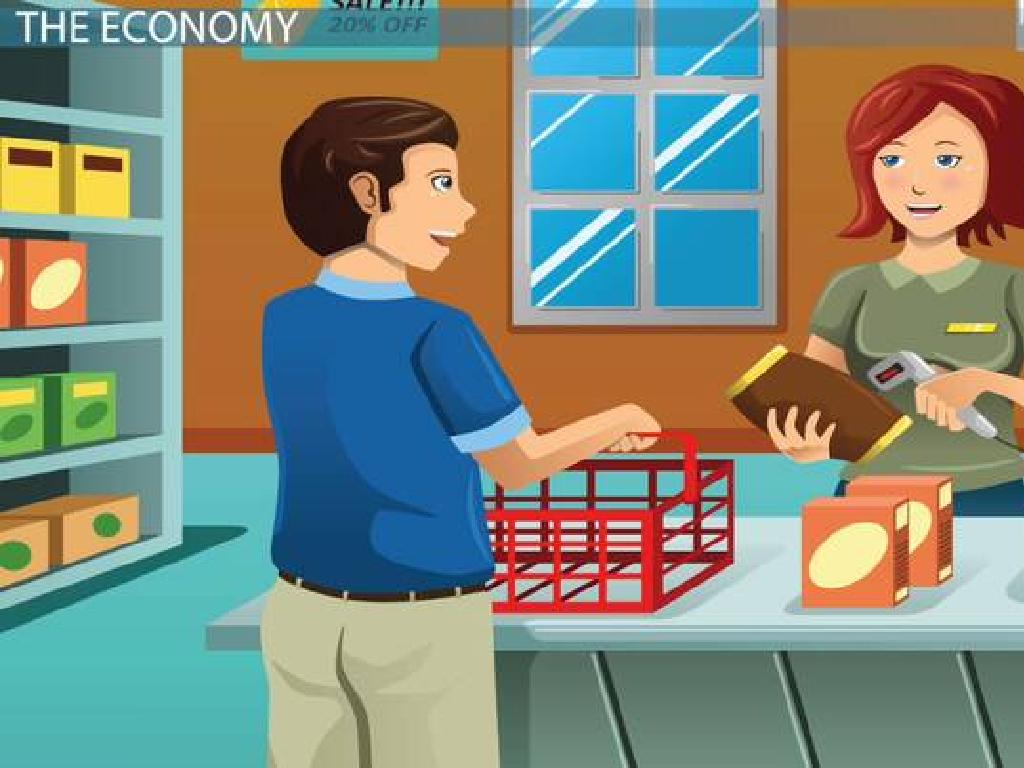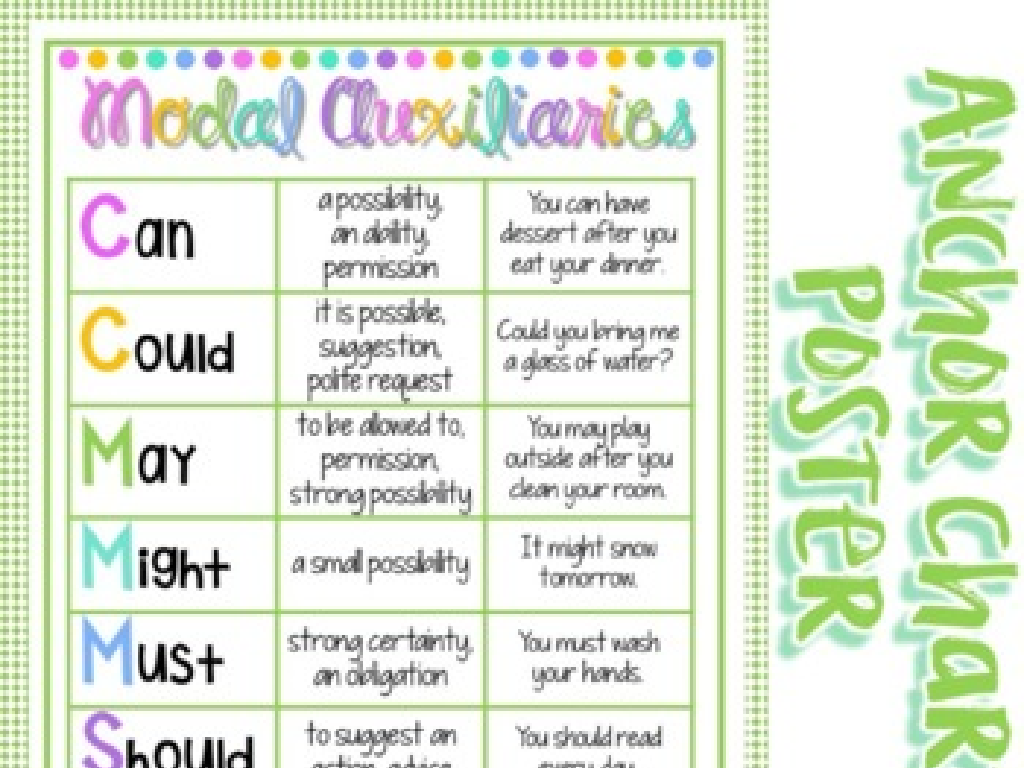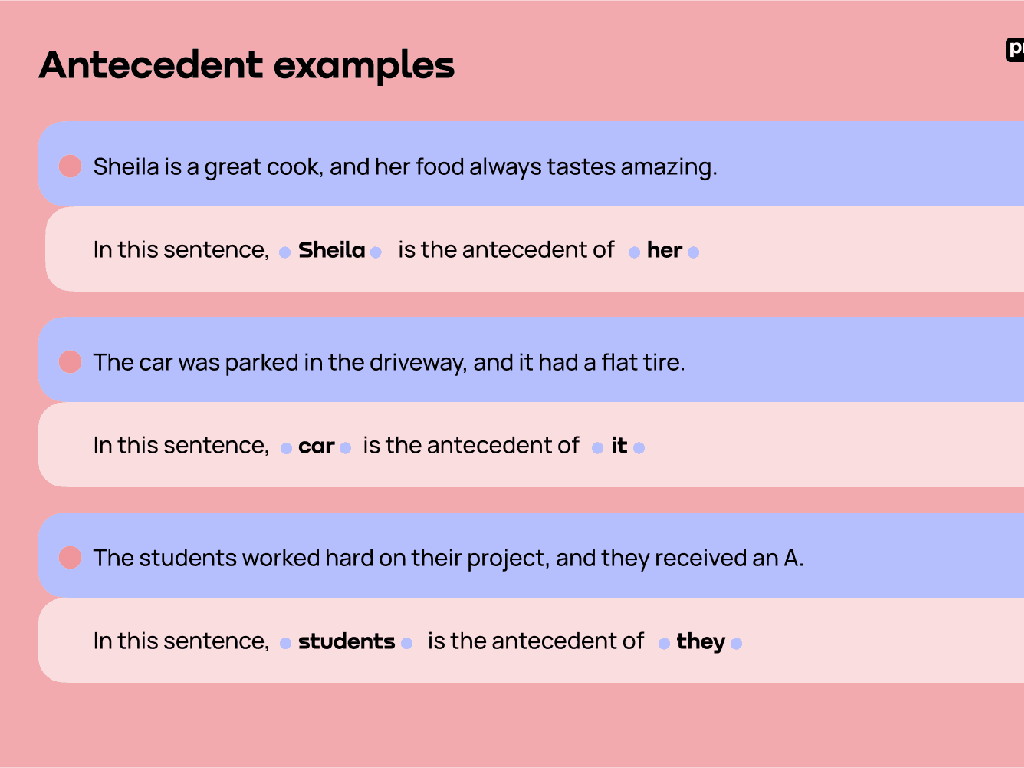Changes Caused By Heating And Cooling
Subject: Science
Grade: Second grade
Topic: Changes Of State
Please LOG IN to download the presentation. Access is available to registered users only.
View More Content
Exploring Heating and Cooling
– Learn about heating and cooling effects
– Discuss changes with heat or cold
– When water freezes, it becomes ice. What about when it’s heated?
– Explore fun changes in matter
– Melting chocolate or freezing juice into popsicles!
– Heating and cooling in everyday life
– Think about cooking food or making ice cubes.
|
This slide introduces the concept of how heating and cooling can cause changes in the state of matter, which is a fundamental concept in science for second graders. Start by asking students what they think happens when things get hot or cold to engage them in thinking about their everyday experiences with temperature changes. Guide them to understand that heating can melt things like chocolate and cooling can freeze things like water into ice. Use relatable examples to make the learning process enjoyable. Encourage them to think of more examples from their daily lives where they observe the effects of heating and cooling. This will help them connect the concept to the real world and understand the practical applications of science.
Exploring States of Matter
– Matter is everything around us
– Matter makes up all things: chairs, water, air
– Matter has 3 main states
– Solid, liquid, and gas are the states
– Examples of each state
– Solids: rocks, ice. Liquids: milk, water. Gases: oxygen, steam
|
This slide introduces the concept of matter and its different states to second-grade students. Begin by explaining that everything they can touch and see is made of matter. Matter can exist in three main states: solid, liquid, and gas. Provide relatable examples for each state to help them understand – solids like rocks and ice, liquids like milk and water, and gases like the air we breathe. Encourage the students to think of more examples and discuss how the state of matter can change with heating or cooling, setting the stage for further exploration into the topic.
Heating Things Up!
– Heat changes solids to liquids
– Heat turns liquids into gas
– Example: Ice melting into water
– When ice gets warm, it turns to water
– Video: Watching ice melt
– Observe how heat transforms ice
|
This slide introduces the concept of how heating can cause a change of state in matter. Start by explaining that when things get warm, they can change their form. A solid, like ice, can melt and become a liquid when it’s heated. Then, if the liquid gets even warmer, it can turn into a gas (like water turning into steam). Use the example of ice melting into water to make it relatable for second graders. Show a video of ice melting to give a visual representation of the concept. This will help students understand the process of heating and its effects on different states of matter. After the video, discuss what they observed and how heat played a role in changing the ice to water.
Cooling Things Down
– Cooling changes matter’s state
– Like when you cool steam, it turns to water
– Gas to liquid, liquid to solid
– Think of water freezing into ice cubes
– Example: Water to ice
– When water gets really cold, it becomes solid ice
|
This slide introduces the concept of how cooling affects the states of matter, specifically how it can change gas to a liquid or a liquid to a solid. Use the example of water turning into ice to make it relatable and easy to understand for second graders. Explain that when water gets cold enough, it freezes and becomes solid, just like when they see ice forming in a freezer. Although we cannot show pictures in the slide, encourage students to visualize or remember times they’ve seen water turn to ice. You can also plan an activity where students observe ice melting and refreezing to understand the concept of reversible change.
Why Does Matter Change with Heat?
– Heating makes molecules move faster
– Like dancers moving quickly across a stage
– Molecules spread out when heated
– Think of balloons expanding in the sun
– Cooling slows molecules down
– Like slowing down to a stop
– Molecules come together when cooled
– Imagine penguins huddling for warmth
|
This slide introduces the concept of how heating and cooling affect the movement of molecules, leading to changes in the state of matter. When matter is heated, the molecules gain energy and move faster, causing them to spread out; this can be visualized as dancers who start moving quickly and spread out across a stage. Conversely, when matter is cooled, the molecules lose energy, move slower, and come closer together, similar to penguins huddling together to keep warm. To reinforce this concept, plan a fun activity where students can observe these changes in a controlled environment, such as melting ice cubes (heating) and freezing water (cooling). Ensure safety precautions are in place when dealing with temperature changes.
Real Life Examples of Heating and Cooling
– Popsicles melting on a hot day
– Heat turns the solid popsicle into liquid
– Water freezing into ice
– Cold freezer turns liquid water into solid ice
– Brainstorm more examples together
|
This slide aims to help students understand the concept of state changes due to heating and cooling through relatable examples. Begin with the familiar experience of a popsicle melting on a hot day, which demonstrates the change from solid to liquid when heat is applied. Then, discuss how water turns to ice in the freezer, showing the change from liquid to solid due to cooling. Encourage the students to think of other examples where heating or cooling changes the state of an object, guiding them to understand that temperature can affect the state of matter. This interactive part of the lesson will help solidify their understanding and make the learning process engaging.
Class Activity: Melting and Freezing
– Experiment with ice and warm water
– Observe changes in the ice
– Watch the ice carefully in the water
– Draw the ice melting process
– Use colors to show ice turning to water
– Discuss our observations
– Share what you saw with the class
|
This activity is designed to help students understand the concepts of melting and freezing through direct observation and drawing. Provide each student or group with a cup of warm water and a few ice cubes. Instruct them to carefully observe the ice as it interacts with the warm water, noting any changes in shape, size, and state. Encourage them to draw the stages of the ice melting in their science notebooks. After the experiment, facilitate a discussion where students can share their drawings and observations, reinforcing the concepts of heating and cooling and their effects on the state of matter. Possible variations of the activity could include using colored ice cubes to make the melting process more visible, measuring the time it takes for the ice to melt, or comparing the melting rate in different water temperatures.
Review: Heating and Cooling Effects
– Recap on heating and cooling
– State of matter changes
– Solids melt, liquids freeze or boil
– Open floor for questions
– Share your thoughts!
– Did you try any experiments at home?
|
This slide aims to review the key concepts learned about how heating and cooling can change the state of matter. Start by asking the students to summarize what they’ve learned about how temperature affects solids, liquids, and gases. Discuss how heat can melt solids or make liquids evaporate, and how cooling can freeze liquids or condense gases. Open the floor for any questions the students might have, allowing them to clarify their understanding. Finally, encourage them to share any experiences or experiments they might have conducted at home related to the topic. This will help reinforce their learning and allow them to relate the concepts to real-world situations.
Conclusion and Homework: Observing Changes
– Praise for today’s science explorers
– Homework: Find heating and cooling examples
– Look for where heat is used and where things get colder
– Draw the examples for homework
– Use colors to show heat (red, orange) and cooling (blue, purple)
– Bring your drawings next class
|
Well done to all the young scientists for learning about how heating and cooling can change things around us. For homework, encourage the students to be observant at home and find real-life examples of heating and cooling. They could look at water boiling for heating or ice cream melting for cooling. Ask them to draw these examples, paying attention to details that show the change of state, like steam or drips of water. Remind them to bring their drawings to the next class so they can share and discuss their observations with their classmates. This activity will help reinforce their understanding of the concepts and allow them to apply what they’ve learned in a practical way.

